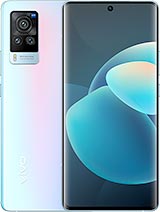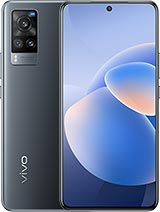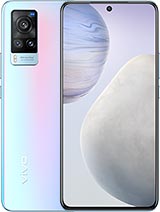vivo X60 Pro+ review By GSMArena Official
Hey everyone VIVO has released a barrage of new phones, but among them only one reigns supreme and that's the VIVO x60 pro plus, among other things, that has a brand-new design, a quad camera setup and a top of the line flagship chipset. So if you're looking for the best of the best, is this the one to get I'm Angie for GSM arena- and this is our review of the VIVO x60 pro plus the VIVO x60 pro plus, has a design that stands out in the crowd with its thin matte aluminum frame and a faux leather back. It reminds us of a darker version of the Oppo find x2 pro. It has a massive rectangular camera island that houses the quad camera setup, and it sticks out significantly still it's definitely one of the more elegant ones. I've seen lately there's also a small mass logo. Next to the ultrawide sensor, tipping you off to their collaboration with Vito, it's drippy and comfy in the hand and due to the material it's immune to all, but the oiliest of fingerprints, the metal buttons are click and easy to reach too.
You can unlock the phone by using the under display fingerprint reader. It's fast and reliable, so generally there'll be no hiccups there. This screen has a slight curve to it, and you'll be happy to know that we didn't run into any touch input errors from it. The curve combined with minimal bezels and a small centered hole punch makes it look every bit as expensive as it actually is. Perhaps the only thing missing here is IP rated protection.
Avis typically, don't have dust and water protection, but considering the class of phone we're talking about this should really change. As far as the screen itself is concerned, it's a nearly 6.6 inch super AMOLED panel with a full HD resolution and a 120hz refresh rate. If that sounds familiar, that's no surprise, since it's the same excellent display as on the VIVO x60 pro, it supports HDR, 10 plus and got HDR streams from both YouTube and Netflix, though from some reason not from Amazon. Prime video, you get 816 nits of max brightness. That's plenty bright and offers great sunlight.
Legibility. Color reproduction varies depending on the mode standard mode. Has a blue tint that you can improve by moving the temperature slider bright mode is simply more saturated, while professional mode has pretty much perfect. Color output, you have three refresh rate modes to choose from to 60 hertz on at all times, 120 hertz at all times, except for apps that force you to switch to 60, hertz or a smart switch mode which should help you save battery. It maintains 120 hertz only when you're touching the display, and otherwise it drops to 60 hertz.
Actually, even if you choose to leave the phone in 120 hertz the entire time, the 4 200 William hour battery provided the phone with decent longevity, it got a 91-hour rating in our endurance test, which is slightly better than the OnePlus 9 pro and the mi 11. The x60 pro plus was actually more impressive in terms of charging thanks to its 55 watt, fast charger. That VIVO is calling super flash charge.2.0 you'll get from 0 to 84 in half an hour and from flat to a full charge in 42 minutes where this flagship doesn't feel like a flagship is audio. It comes with a single downward facing speaker, and it earned a good score in terms of loudness. It's a bit quieter than the regular x60 pro, but the quality is better, and we preferred the high frequencies in female vocals on the plus, the x60 pro plus comes with either 128 or 256 gigabytes of UFS 3.1 storage and either 8 or 12 gigs of ram. More importantly, it has the snapdragon 888 5g, which is one of the best, if not the best chipsets in the android world, the x60 pro plus breezed, through benchmarks and actually topped many of them.
Even thermal throttling has little impact on its performance, though we did notice it heating up after sustained testing. In short, it's an extremely capable performer, like the VIVO x60 pro the plus has android 11, with a proprietary fun touch 11. On top, this version is less stock than last year's v20 and as a whole, it has a more fun touchy feel there are some standard basics, though the theme is clearly fun. Touch you'll, find all the usual suspects here, like navigation gestures, custom, multimedia, apps and tools. The eye manager helps you clear your phone's memory, cache and analyze data usage too.
Naturally, you'll also find some android 11 features too, like bubbles, better permissions handling and a built-in screen recorder. If you like, changing up the looks of the UI you'll, also like that it comes with a ton of options, you can change the font, the theme and even system animations from the dynamic effects, menu, there's also more customizable ambient light effects for notifications, and you can choose both the style and the duration of the effect. The ultra game mode also has a handful of options for minimizing disturbances, and it now lets you turn off the phone's screen. While a game runs in the background, which might be handy for some titles, the VIVO x60 pro plus has a quad camera setup and all four cameras are quite promising. First, there is the 50 megapixel main camera, with an f 1.6 aperture laser autofocus and is. Then there's a 48 megapixel ultrawide camera with gimbals stabilization, a 32 megapixel telephoto with native two-time zoom, and an 8 megapixel periscope tell camera with a native five times, zoom and optical image.
Stabilization during the day, we got great images, which is really no surprise. We like the colors a lot. They were vivid in the default state, but not overly, so the dynamic range and detail are excellent and are on par with other best-in-class snappers zooming in you'll use a telephoto camera. During the day. We've got good detail, minimal noise and a wide dynamic range, though it's not quite to the extent of the main camera.
At five times, zoom you'll be using the periscope snapper and get detailed shots with little to no noise. The dynamic range is slightly more narrow than the other cameras, but it's still acceptable. The ultrawide camera snaps, some very nice shots, sharpness and detail, are excellent and are practically class leading there's some fine grain in the sky, but otherwise noise isn't an issue during the day. Dynamic range is better than on most ultra-right cameras out there, and it's actually on par with the main camera. As far as colors are concerned, greenery has a slightly warm cast and though it doesn't look bad, we prefer colors to match between cameras.
Since you can lock focus on subjects, you can capture some excellent macro shots. The only thing you might want to be wary of is potentially throwing a shadow on the thing you're trying to photograph, except the periscope camera, the cameras have quad Bayer sensors, and you can choose to shoot with their full resolutions. If you wish, the main camera can resolve finer detail in the right circumstances and if you really need to eke out those details, the thing is, you also get a lot more noise and less saturated colors, along with larger file sizes with the two times telephoto camera. You will not get a significant hike in noise, and it's also easier to see the extra detail here. There's not a ton of it, but it is noticeable with the ultrawide.
There is a substantial drop in terms of dynamic range and the colors are notably desaturated. There is also a questionable benefit in terms of detail, so maybe just avoid the full resolution with the untrod camera, when the light gets low, you'll find that there is some default night mode processing in the regular photo mode, and it's quick and unobtrusive dynamic range is excellent. Colors are vivid, and you'll have fine detail without any real noise. Switching on night mode improves shadows ever so slightly, but it doesn't make a dramatic difference. However, even though there are no huge benefits to using the night mode, there aren't a lot of drawbacks either, since it doesn't take much longer to shoot and there's no adverse effect on detail.
This also applies to the effect the night mode has on the untrod camera, since the effect is pretty much the same in the regular photo mode. The ultrawide has a wide dynamic range and more detail in the shadows. Detail and noise reduction are good, regardless of which mode you use. Colors aren't desaturated either two time zoom shots in low light are handled by the telephoto. If you're in the regular photo mode, the dynamic range is respectable, with the occasional exception being point light sources, the plus seems to prioritize, highlights and exposes a bit darker than other phones.
Colors are vivid as usual with the night mode two times. Zoom shots are mostly outsourced to the main camera. Unfortunately, that meant a loss of detail and for scenes that aren't too dark you'd be better off using the photo mode. If you want five time, zoom shots they're, mostly captured with a periscope camera images, are underexposed, there's less than ideal dynamic range and a bit more noise than we'd like, but sharpness was good, and there was plenty of detail. If you use the night mode for five time, zoom shots, you should know that they're captured with various cameras depending on the scene.
Sometimes it's the periscope other times the tell camera and still others. The phone will crop in from the main camera as a whole. Night mode has less detail and shots look much more rough if you like, taking portraits you're in luck because there's a lot of options here, there are three levels of zoom available, including five time zoom, which doesn't have a faux bouquet, but does include beauty effects and filters with the most zoomed out. Portrait option details great in most light conditions, and it does slightly better in dimmer settings subject. Isolation is good overall, but if you choose the two time zoom module, there are more mistakes.
The tell portraits also had warmer skin tones versus the more natural output from the main camera. Dynamic range is wide in both modes and backlit. Portraits are good overall, the mass biotar simulation recreates, the popular both look of the lens of the German optics company. The effect worked better with highlights and busy backgrounds, and we noticed that it's more pronounced with the tell camera, the 32 megapixel selfie cam produced pretty much the same shots as the VIVO x60 pro. The dynamic range is wide and colors are accurate, though not as lively as on the rear.
Cam, more challenging lighting conditions, rob you of details, but generally with more balanced lighting. There's plenty of detail to be seen. The VIVO x60 pro plus records video up to 8k at 30fps from the main camera. The dynamic range is limited, but colors are accurate. Clips are sharper and cleaner than on the s21 plus two.
If you zoom in two times you'll see footage that has been visibly upscaled and is quite blocky. There is quite a lot of sharpening as well. Actually you should keep in mind that, while the main camera goes up to 8k, the ultrawide goes up to 4k and the two telephotos are limited to full HD 4k shots from the main camera are sharp and detailed with warmer colors than the natural reproduction on 8k clips dynamic range is a bit too narrow, though, if you zoom in the footage, comes from the main camera so once again, it's upscaled and over sharpened, if you zoom in further, if you want to zoom in 5 times, you'll be stuck in a 1080p resolution. Still the periscope camera captures. Some very good footage detail is as good as on the note 20 ultra, though you should keep in mind that the galaxy phone can also capture zoomed footage in 4k, while the VIVO doesn't 4k untrod videos had limited dynamic range and lost detail on both extremes, especially in shadows.
Stabilization is available on all the cameras in all the resolutions. In all the frame rates, it was excellent at maintaining stability and pans were executed smoothly. He did notice that some shake made it to videos when walking the ultra stable mode, which VIVO is calling super antis hake is only available in full HD at 60fps. If you use the regular stabilization with the ultrawide you'll find that footage is practically flawless with no shakes while walking. If you switch on the super anti-shake mode, things are even better, as it was even capable of ironing shakes from running its better than on the main camera, and it's perfect for action videos, while stabilization for five time.
Zoom footage isn't quite as remarkable as on the rest of the cameras. It's alright for what it is. It is tough being a flagship this year considering how much good competition there is. I really wish that VIVO had included an IP rating and stereo speakers, because that seems to be the phone's biggest misses aside from that. It's a very capable phone on all fronts and choosing a flagship becomes a matter of design preference and what sort of camera setup you want, whether it's more geared towards capturing videos or more zoomed in shots.
In any case, the VIVO x60 pro plus, is a very capable phone and is definitely one worth considering if you're looking at this year's flagship roster. Thank you for watching everyone stay safe, and I'll, see you guys next time you.
Source : GSMArena Official




























